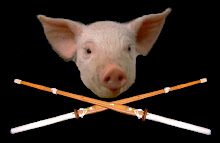In a study recently published in Proceedings of the National Academy of Sciences, investigators discovered a novel genetic mutation that triggers a blood disorder that has some ghoulish symptoms!
There is a group of eight known blood disorders called Porphyrias, that affects the bodies ability to create heme. Heme is a component in hemoglobin that binds with iron to give blood it’s red color. One blood disorder called erythropoietic protoporphyria (EPP) occurs during childhood and can cause some serious symptoms that are similar to the vampire myths. EPP can cause extreme light sensitivity, where a patient can develop painful blisters if exposed to sunlight for an extended time. EPP patients are also chronically anemic, which leads to a pale looking complexion and the light sensitivity. People with EPP also require frequent blood transfusions to increase their heme levels to reduce some of the disorder’s symptoms. Scientists have recently discovered a genetic mutation that triggers EPP and also have helped identify a possible therapy target. In normal production of heme, the body goes through a process called porphyrin synthesis that occurs in the liver in bone marrow. In EPP, this porphyrin process is disrupted leading to a decrease in heme production and a buildup of protophyrin components. Investigators identified a protoporphyrin component called protoporphyrin IX accumulates in the red blood cells, plasma, and liver of EPP patients. By doing gene sequencing, researchers were able to discover a mutation in the CPLX gene. This gene was identified as regulator in heme metabolism and is now the genetic signature of EPP. Scientists hope that identifying different genetic mutations in Porphyrias can lead to new therapies that could help correct some of the mutations responsible for these disorders
For more accurate data follow the link:
Proc Natl Acad Sci U S A. 2017 Sep 19;114(38):E8045-E8052. doi: 10.1073/pnas.1700632114. Epub 2017 Sep 5.





No hay comentarios:
Publicar un comentario